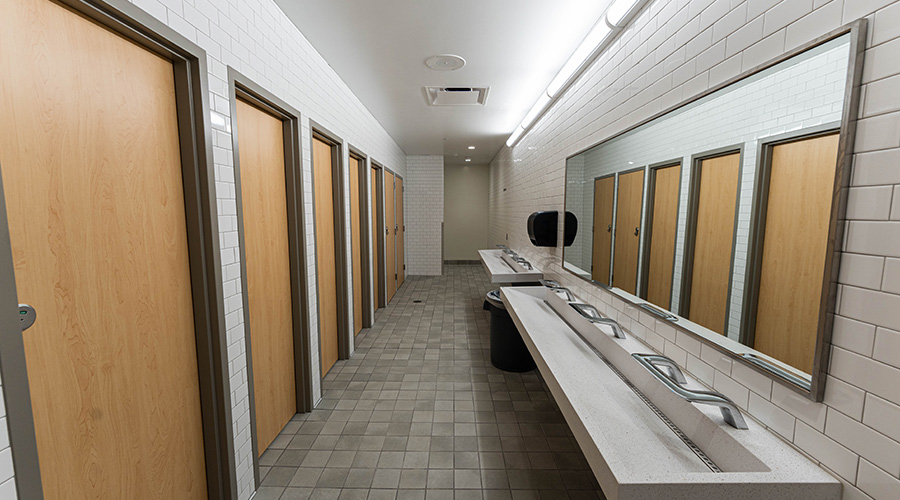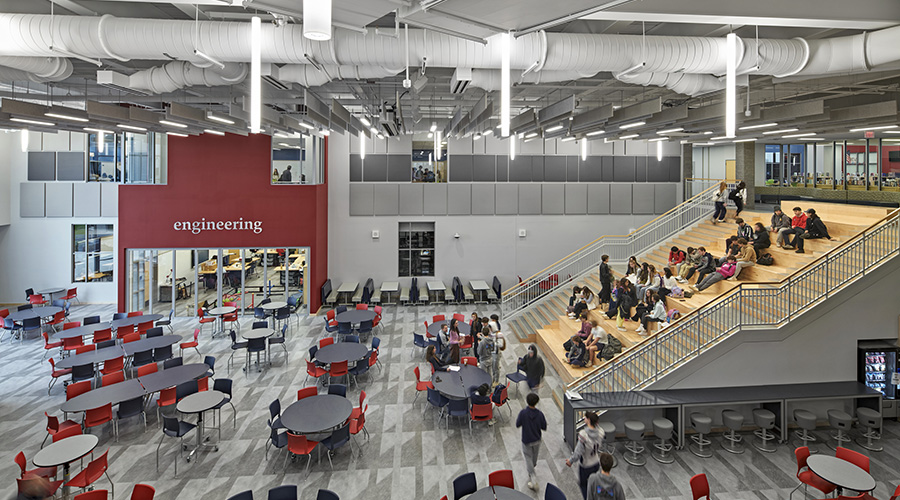LEED for Schools Targets Acoustics, IAQ and Lighting
Of all of the LEED for Schools credits, the acoustics credit has done more than any other to integrate systems — including structural, mechanical, daylighting and architectural — because acoustics considerations, to be affordable, must be considered in the earliest phase of design. The two primary aspects of acoustics that need to be considered include background noise and speech intelligibility, which is affected by reverberation time. Background noise can be ameliorated with acoustically sensitive building materials (walls, roof and windows) and quiet HVAC systems. Reverberation time is affected by space size and geometry, as well as the noise absorption ability of the building materials used. Designing for good acoustics will include not only an acoustics engineer, but also the architect, the structural engineer, the mechanical engineer and sometimes the lighting designer.
Integrated Design In Practice
Integration takes place when one considers how various systems affect one another. Robust systems designed for noisy environments may also provide, for instance, a strong roofing system that can easily carry the weight of a green roof. Glazing systems designed to handle acoustic problems may also increase energy efficiency, such as when triple-glazed windows or larger air spaces are required. Materials used to reduce reverberation time, such as acoustic ceiling tile, may also help achieve other LEED goals, such as recycled content or regional materials. White acoustic ceilings do a good job of reflecting light and may reduce the required number of luminaires, improving illuminance while reducing lighting energy consumption and potentially reducing HVAC system size for cooling.
Indoor air quality and ventilation also affect students and learning. Studies have shown that high VOC levels can cause respiratory and other disorders and high carbon dioxide levels can reduce student achievement. These issues may be lessened with properly designed HVAC systems. Often carbon dioxide sensors are installed in densely occupied spaces, such as classrooms, to bring in more outside air when the classroom is full and to bring in less (or no) outside air when it is empty. Just as with acoustics, an integrative design process is important as the materials used in a space, the acoustics and the HVAC system are all interrelated.
Lighting — including daylight — is also important to a good learning environment. Studies have shown that daylight, as long as it does not also cause glare, can help with learning and test taking. Views are also important as people need to "stretch their eyeballs" on occasion, especially because many of us now spend so much of our time staring at computer screens.
Many schools now place a significant emphasis on daylighting. Ironically, in the 1970s and 80s, in an effort to reduce energy consumption, windows in schools were minimized. More recent studies have shown that lack of daylight can disrupt hormone levels, which affects sleep and concentration.
Related Topics:














